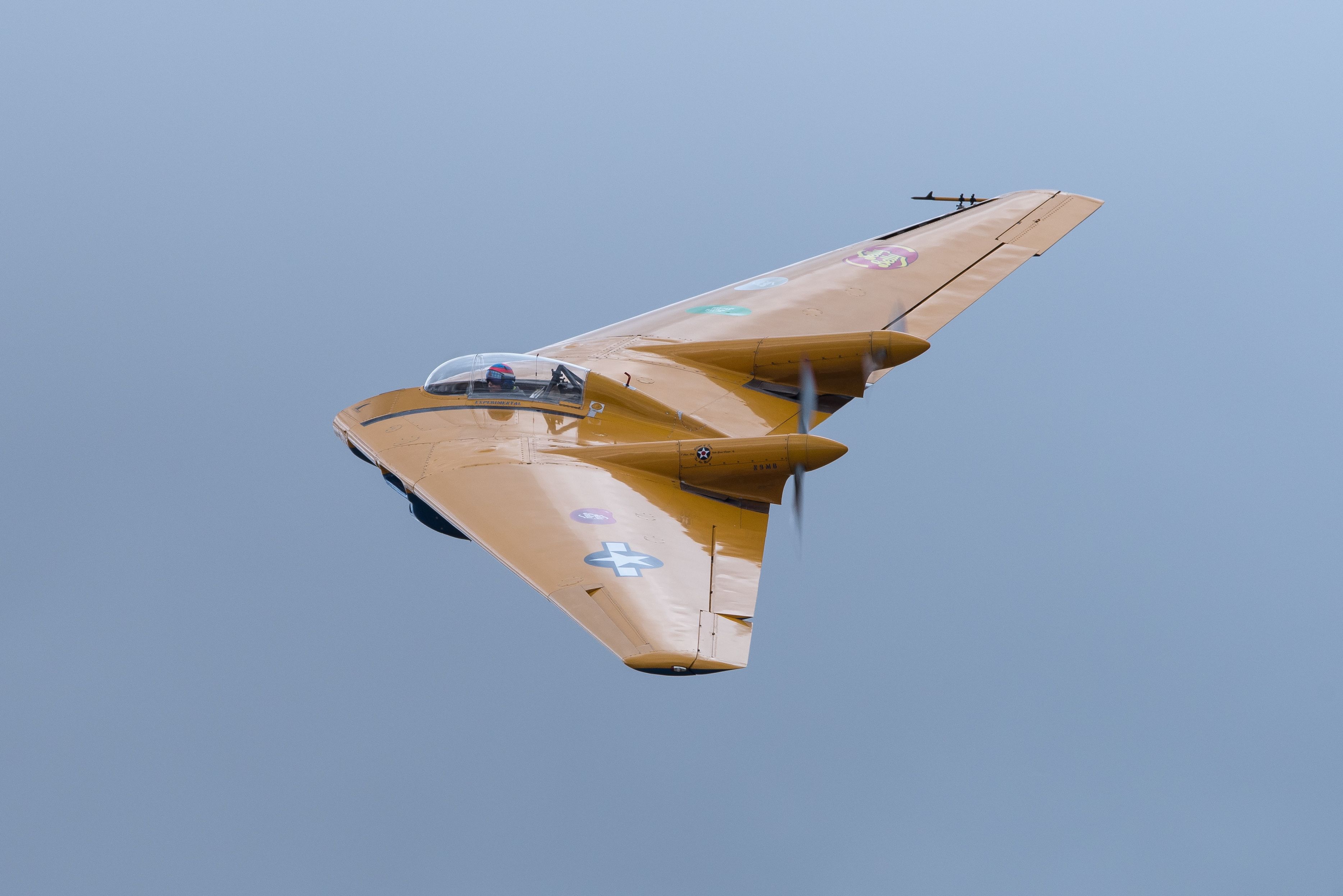The Northrop N-9M was a scaled-down model aircraft used to develop the Northrop XB-35 and YB-35 flying wings. With a wingspan of 60 feet (18 meters), the N-9 stood at one-third of the full-sized 172-foot (52-meter) long-range heavy bombers. The aircraft first took off on December 27, 1942 – and, nearly 77 years later, tragically flew for the last time.
The final Northrop N-9M
N9MB was the last of four Northrop N-9Ms ever built to remain in existence. The unique aircraft was owned and operated by the Planes of Fame Air Museum in Chino, California, which hosts over 160 iconic aircraft from various eras of aviation history. Some 35 aircraft, like the N-9M, are maintained in flyable condition.
On April 22, 2019, N9MB was taken on a post-maintenance test flight following the completion of an annual inspection. On the flight deck was 51-year-old Dave Vopat, a certified flight instructor with an Airline Transport Pilot License (ATPL). Vopat was certified to fly various modern and historical aircraft, and had accumulated over 20,000 hours of flight time – including 25 on the N-9M.
Love aviation history? Discover more of our stories here
The crash
Shortly after take-off from Chino Airport the aircraft was reported to have pitched upward and banked left, followed by an abrupt right roll. Witnesses then saw the N-9M nosediving before crashing on the grounds of the California Rehabilitation Center state prison. Sadly, Vopat was killed in the crash.
In a preliminary report on the incident, the National Transportation Safety Board (NTSB) wrote:
“Multiple witnesses located near the accident site reported observing the airplane flying on a northeastern heading at a low altitude when it performed a "barrel roll." Several witnesses reported that after the maneuver, the airplane "wobbled [from] side to side" before the airplane's canopy separated. Shortly after, the airplane entered a steep right turn, and descended into the ground in a nose low attitude.”
The aircraft was being operated under an experimental airworthiness certificate and had 732.8 hours of flight time at the time of the crash.
Want answers to more key questions in aviation? Check out the rest of our guides here.
No cause was ever found
During the examination of the crash site, all major structural components were accounted for and there was no evidence of any pre-existing malfunctions observed on the airframe or engines. Due to the extent of damage, however, the flight control system, hydraulics, and associated engine systems could not be tested for faults.
Thus, the investigation turned to the pilot. While trace amounts of ethanol was found in Vopat’s muscle tissue, alcohol and medication use were ruled out as a cause for the accident. Investigations found that the seat restraint was unlatched, suggesting that Vopat, who was wearing a parachute, had attempted to escape the falling aircraft but did not have sufficient altitude to do so.
Get the latest aviation news straight to your inbox: Sign up for our newsletters today.
Ultimately, the NTSB concluded that it was likely that Vopat experienced a loss of control during the flight. The reason for the loss of control, however, remains unsolved.
Sources: Aviation Safety Network, The Drive

